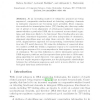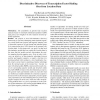37 search results - page 1 / 8 » A Fast, Alignment-Free, Conservation-Based Method for Transc... |
RECOMB
2008
Springer
14 years 9 months ago
2008
Springer
As an increasing number of eukaryotic genomes are being sequenced, comparative studies aimed at detecting regulatory elements in intergenic sequences are becoming more prevalent. M...
BMCBI
2007
13 years 9 months ago
2007
Background: Computational methods to predict transcription factor binding sites (TFBS) based on exhaustive algorithms are guaranteed to find the best patterns but are often limite...
CSB
2005
IEEE
14 years 3 months ago
2005
IEEE
Motivation: The availability of genome-wide location analyses based on chromatin immunoprecipitation (ChIP) data gives a new insight for in silico analysis of transcriptional regu...
BMCBI
2010
2010
An intuitionistic approach to scoring DNA sequences against transcription factor binding site motifs
13 years 9 months ago
Background: Transcription factors (TFs) control transcription by binding to specific regions of DNA called transcription factor binding sites (TFBSs). The identification of TFBSs ...
WABI
2001
Springer
14 years 1 months ago
2001
Springer
A central issue in molecular biology is understanding the regulatory mechanisms that control gene expression. The recent flood of genomic and postgenomic data opens the way for co...


